All Four One: "Household Gods" by HART Social Studio
Nov 17, 2020
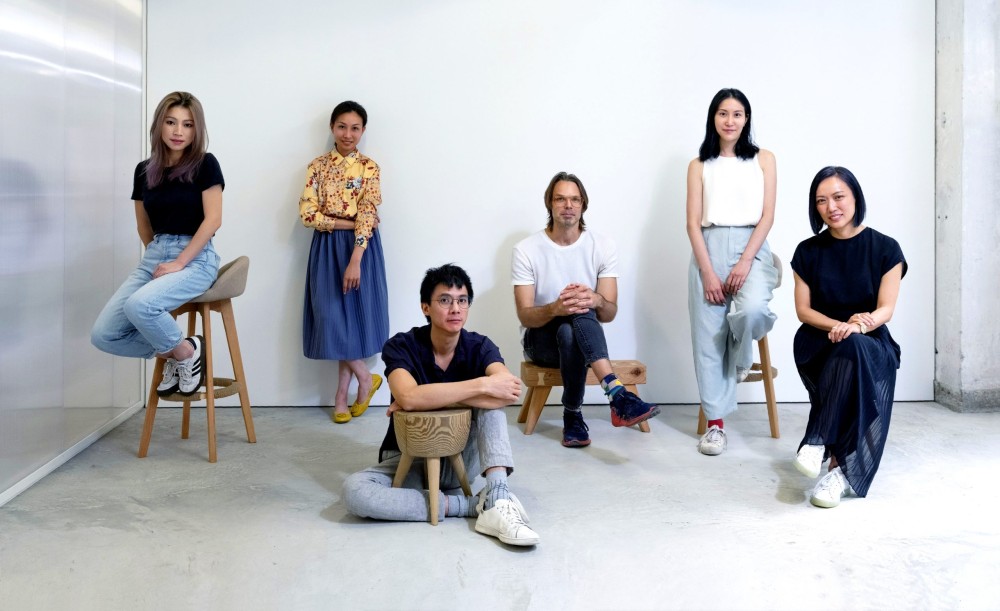
What happens when you take four Hong Kong–based visual artists of varying ages and practices, bring them together in the midst of political upheaval and a global pandemic, and encourage them to explore interpretations of the unknown?
If you’re not-for-profit arts organisation HART, an incubator for local talent and collective of art spaces and programming, you end up with the unique new exhibition Household Gods. The show, curated by Ying Kwok and running at HART Hall at H Queen’s until November 21, features the work of Nadim Abbas, Shane Aspegren, Tap Chan and Wu Jiaru. It’s also the first exhibition to result from HART’s arts programming.
“This exhibition is really special,” says Kwok, an independent curator who had never worked with HART before. “In usual exhibitions, the curator comes up with an idea or a narrative and invites artists to respond, but this exhibition works the other way round. All four artists involved were artists in residence or studio artists in HART Haus, a shared studio space in Kennedy Town. When they work, they sit like the Chinese character tin (田) spread in four sections, so they’ve seen one another’s work and are familiar with one another’s practices.”
Kwok began working with the artists in June and soon found common ground from which to begin a dialogue. “All of their practices revolve around supernatural concepts, things that cannot be explained, such as parallel universes and religious motifs,” she says. “When you can’t prove that it exists, then what does religion do for our society? It guides you when you feel lost and it’s a source of comfort when you’re going through a difficult time. So the artists used this as a framework for the exhibition and they came up with the theme of the exhibition by themselves.”
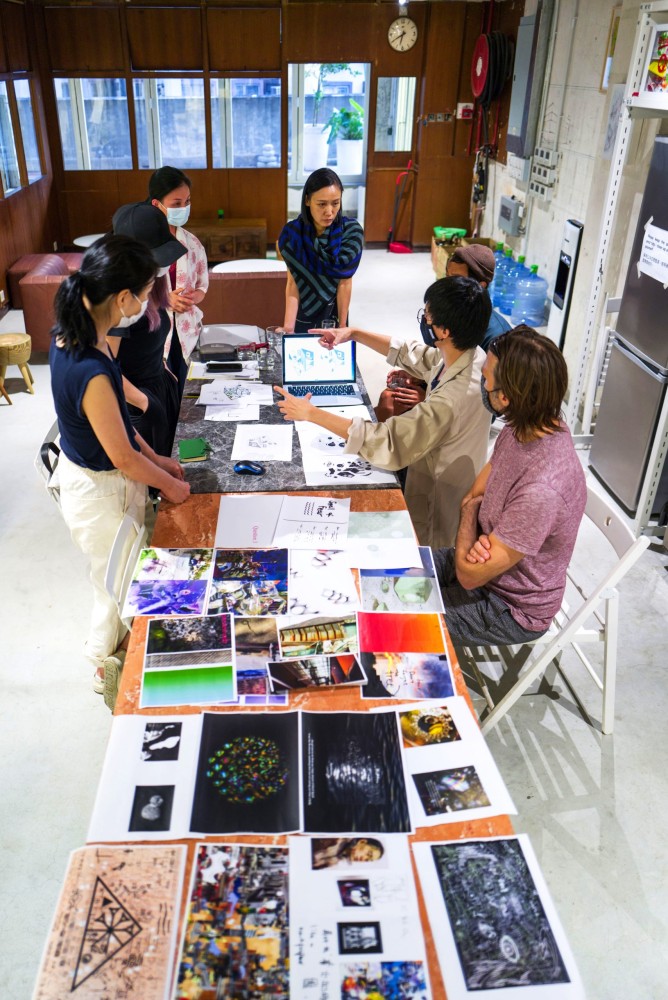
The entire process, as described by Kwok and the director of HART, Jeannie Wu, was “very organic”. “HART Social Studio is similar to existing artist residency programmes but slightly different I would say, because we don’t just ask the artists to stay there for a certain period of time and have them deliver something,” Jeannie Wu explains. “We just ask them to come in and engage with the community and build that with us. So then you’d know that this is very organic, and for each session we have different combinations of people, so based on their talents, expertise, character and personality, we have all kinds of collaborations happening.”
In the case of Household Gods, Abbas, Aspegren and Chan came in with more experience—the men in particular—while Wu Jiaru provided a very youthful element. “We saw how the four of them conceptualised their ideas, and saw they also had experience to coach, teach and preach about contemporary art in different aspects and environments. So we thought this was a good opportunity for them to say something in this particular time when everyone is forced to be inactive,” Jeannie Wu says. “Even though this is a difficult time, we want to interact and engage and connect with people.”
Indeed, Household Gods stands out for several reasons and in particular for the creative dialogue not only among the artists but also with their audience. Kwok began by dividing the exhibition space into two zones separated by Wu Jiaru’s door_god I & II paintings, which serve as a metaphor of the Lao Zhu quote “whatever is fluid, soft and yielding will overcome whatever is rigid and hard”.
“The works that are exhibited from the entrance to the shelf here physically respond to the spiritual space that exists in architecture,” Kwok says, pointing to Abbas’s installation piece Homeless Forms for Formless Homes. The large-scale work is intended to place a new logic on modular domestic furniture to expose the unpredictable nature of image, body and space.
“Nadim’s work has very rich research support; his interest lies in architecture, biochemistry and philosophy. When you reduce architecture and biochemistry to its simplest form in our modern daily life, it is a single modular unit. When we look at the Covid-19 virus, it’s a single unit made up of Y-shaped modular units. The surface of our skin is actually made up of upside-down Y-shaped units, that’s why the virus easily attaches itself to us. When we unpack the layers of everything in our lives to its very core, you will find a lot of structural similarities. That’s what’s interesting about the core idea in his work.”
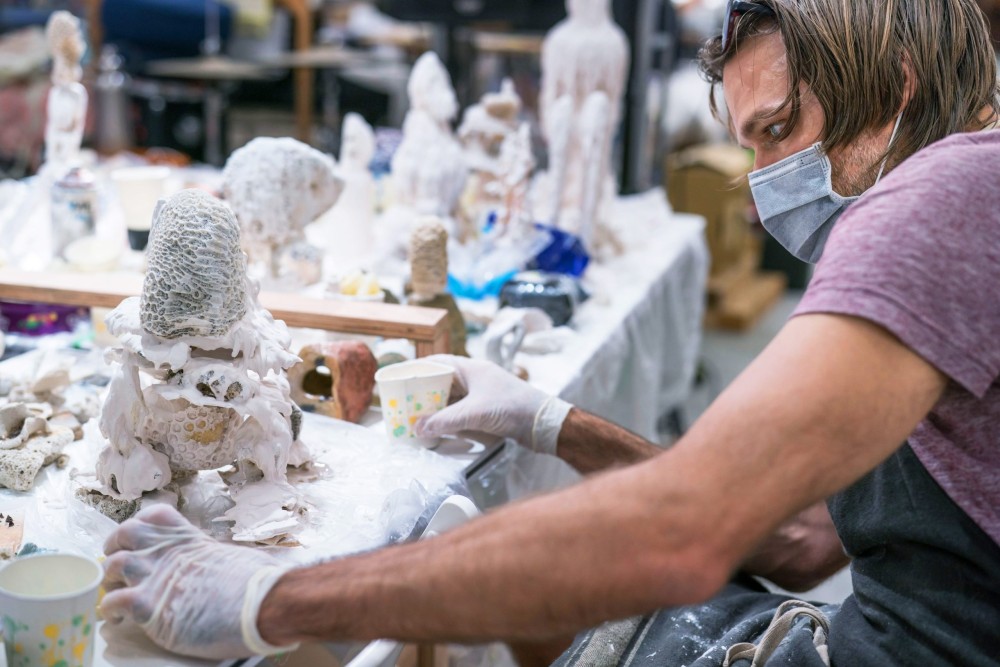
Aspegren’s Ratios for brief spells, meanwhile, “explores how our environment carries our emotions”. The sound installation, along with a series of smaller sculptures created from found organic objects, expands on the artist and DJ’s long-term investigation into the healing qualities of sonic frequencies on the body and mind. “Shane looks into how religions such as Hinduism and Buddhism utilise sound in meditation, and recreates his own sonic sounds that contribute to a healing effect,” Kwok explains. “From these sounds he develops visual elements, such as the carpet we’re sitting on now. Sounds exist digitally in the form of soundwaves, and this carpet is a soundwave.”
The exhibition is also separated into halves, with one side dominated by statues and architecture and the other by atmosphere and space. “Tap came up with the concept of mirroring quite early on in her work, so I found a space where a mirrored glow can be created when people step inside the exhibition space,” Kwok says, referring to Chan’s series of work in white that “summon the uncanniness present in dreams and phantom objects found in a virtual world”.
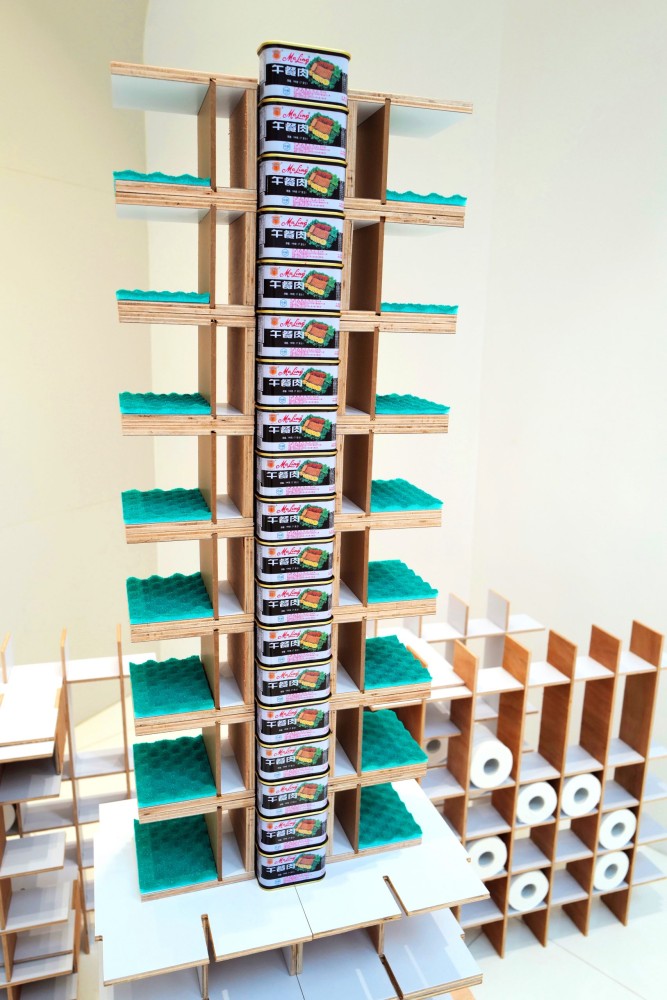

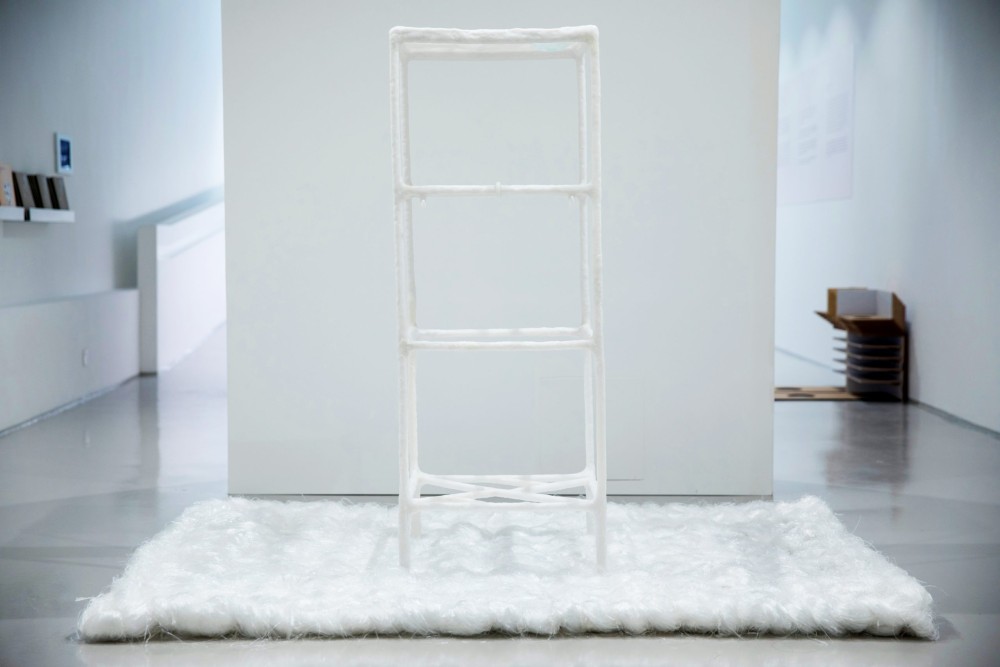
Wu Jiaru’s sculptural construct beige_object rounds out the exhibition, a collection of daily household objects—all in plastic, the material of her generation—repurposed as collages. “Plastic is a cheap material and is often created for temporary use in the forms of containers for cleaning or beauty products. However, Jiaru freezes them in time, gives them permanence, the nature of a relic by turning them into sculptures,” Kwok says. “It’s interesting to note that although plastic is often produced for temporary use, the life of plastic spans longer than an average human life. Jiaru’s work puts together a lot of contradictions.”
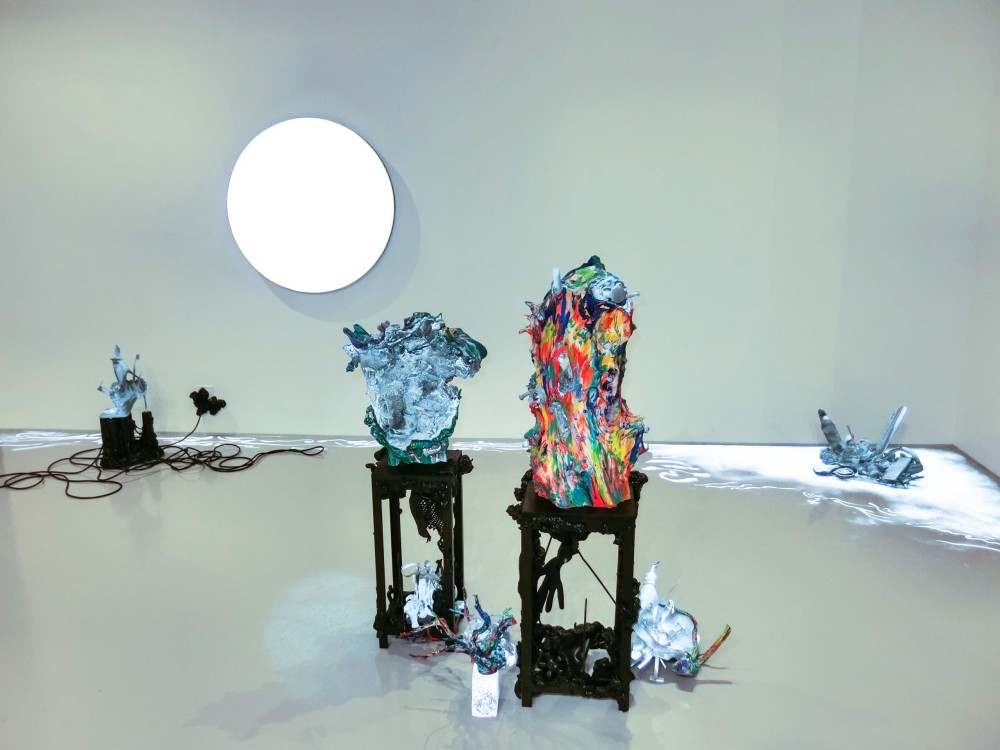
Wu Jiaru also created an eight-and-a-half-minute movie based on a Virginia Woolf book, using everyday images to create a dialogue between humans and artificial reality. “I think Jiaru’s work is the most abstract out of all the artworks here and cannot be directly explained to an audience,” Kwok notes.

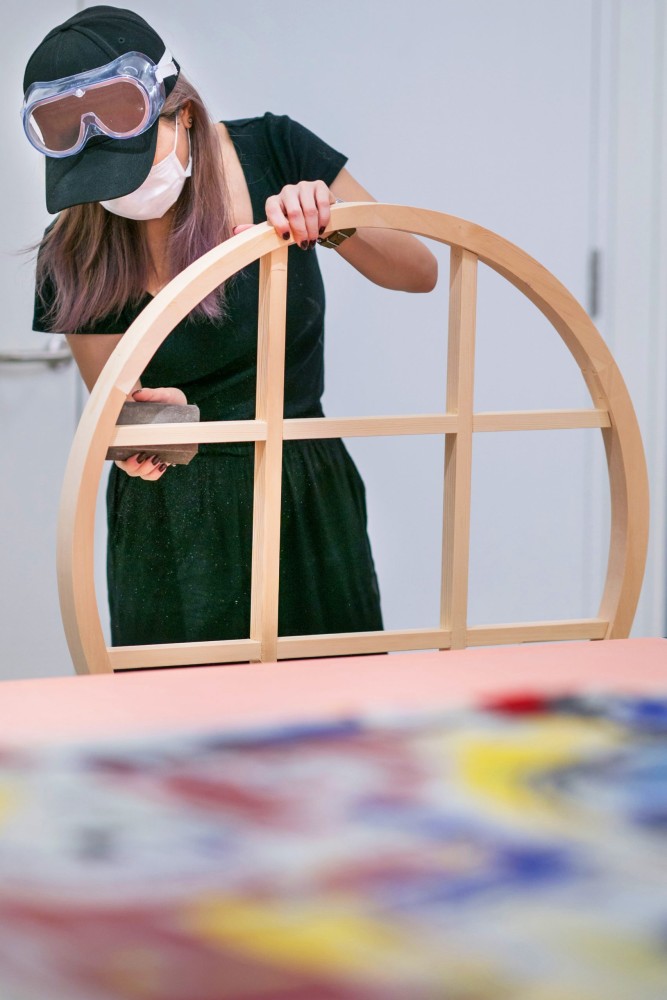
Visitors to Household Gods are encouraged to “embrace and extend the artists’ own imaginations on the emotional impact of the environment around us”. For Jeannie Wu, one way that can carry on even after the exhibition has closed is through the unique exhibition publication the artists created.
“To be very honest, I don’t really enjoy doing art exhibitions,” she admits. “I struggle because I value exhibitions as an opportunity for the artists to gain exposure and have a reference point to evolve, but at the same time I feel like it has reached its limits as a mode or means of expression.
“This exhibition is unique and was a breakthrough for me because of the way everyone engages with one another, as well as the creation of our exhibition catalogue. An exhibition catalogue is the only truly tangible thing that documents what’s happening at a particular time, but in a way it can never really replace the in-person or real-time experience. But we rethought what contemporary art is and what a contemporary art exhibition could be, that’s why we have the exhibition publication. It’s not an ordinary exhibition catalogue—it’s a standalone creative work from the artists. It doesn’t have images of the artwork”.
By pushing the boundaries of what an art exhibition can be, Jeannie Wu also hopes to also change the way Hong Kong people approach contemporary art. “In general the people of Hong Kong, no matter their social strata, have a shallow approach to contemporary art, which makes me feel very helpless. They see the art but they don’t and can’t approach it, as if there is a thin layer of cling film binding them,” she says. “Hong Kong people have this habit where they walk into an exhibition and ask, ‘What does this artwork mean?’ Why do people expect that everything has a specific answer to it or expect that artists must have a message they want to deliver through their art? Can’t there just be no reason at all?”
Jeannie Wu may not have all the answers. But there’s no doubt she will continue to promote HART as a platform to bring different voices and viewpoints together in the spirit of unity and connection. And if the audience leaves an exhibition like Household Gods having broken through the thin cling film that binds them, then all the better.
Household Gods is on from 30 September to 21 November 2020 at HART Hall, G/F, H Queen’s, 80 Queen’s Road Central.
Entry is free. See thehart.com.hk for more information, including the schedule for guided tours.
See also: #legend100: Hong Kong’s top 100 influencers of 2020



























